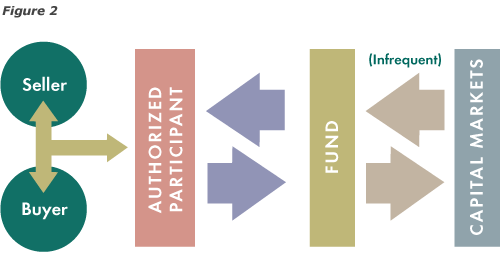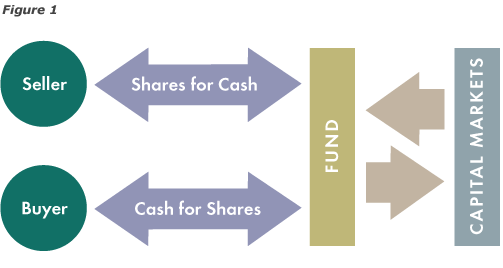Understanding ETFs and Mutual Funds
Post on: 7 Июнь, 2015 No Comment

Understanding ETFs and Mutual Funds
ETFs (Exchange Traded Funds) are the rising stars of the investing world. While mutual funds were the investment of choice for most individual investors during the 1980s and 1990s, ETFs are steadily becoming the most popular investments of the 2000s.
ETFs can perhaps best be described as the perfect blend between stocks and mutual funds. When you buy an ETF, you get all of the same benefits of diversification you get when you buy a mutual fund, but you can buy and sell an ETF just like you can a stock.
How an ETF Works
An ETF is a firm that accepts money from investors and then employs a fund manager to invest that money according to the rules that have been developed for that particular fund. For instance, if you put your money into an ETF that tracks the S&P 500, the fund manager would take your money—and the money from all of the other investors in the ETF—and buy all of the stocks that comprise the S&P 500.
Most ETFs track market indexes (like the Dow Jones Industrial Average), market sectors (like the Financial Services sector) or specific commodities (like gold) so the fund manager doesnt have to do a lot of analysis and extra work to determine which stocks or assets to buy. However, there are an increasing number of actively managed ETFs coming out on the market that require the fund manager to play a much more active role.
When you put money into an ETF, you are buying shares of that fund. As the entire fund increases in value, your shares also increase in value. As the entire fund decreases in value, your shares also decrease in value.
Benefits of Investing in ETFs
Investing in ETFs has many benefits for individual investors, like you. Some of the benefits you could enjoy are:
- Instant diversification
- Access to commodities and other assets
- Easy implementation
Drawbacks of Investing in ETFs
Investing in ETFs also has a few drawbacks. Some of the drawbacks are:
- Fees (Although they are typically lower than the fees charged by mutual funds)
- Taxes (Although mutual funds typically have a higher tax burden)
- Potential of under-performing the market

Understanding Mutual Funds
Mutual funds are the most popular investment among individual investors, like you. If you have a 401(k) or work with a financial planner, you most likely own a few mutual funds.
Mutual funds are popular because they give you instant diversification in your investment portfolio without you having to worry about buying and selling a bunch of stocks.
How a Mutual Fund Works
A mutual fund is a firm that accepts money from investors and then employs a fund manager to invest that money according to the rules that have been developed for that particular fund. For instance, if you put your money into a mutual fund that invested in big, multi-national companies, the fund manager would take your money—and the money from all of the other investors in the mutual fund—and buy stocks in companies like Microsoft and General Electric.
When you put money into a mutual fund, you are buying shares of that fund. As the entire fund increases in value, your shares also increase in value. As the entire fund decreases in value, your shares also decrease in value.
Benefits of Investing in Mutual Funds
Investing in mutual funds has many benefits for individual investors, like you. Some of the benefits you could enjoy are:
- Instant diversification
- Access to professional money managers
- Easy implementation
Drawbacks of Investing in Mutual Funds
Investing in mutual funds also has a few drawbacks. Some of the drawbacks are:
- Fees
- Taxes
- Potential of under-performing the market














